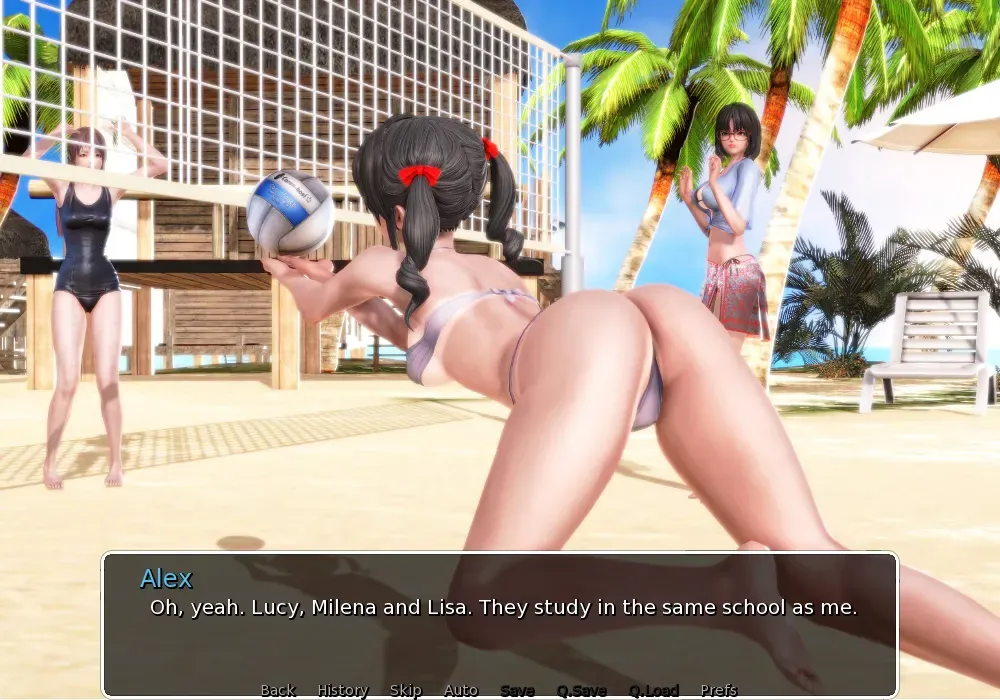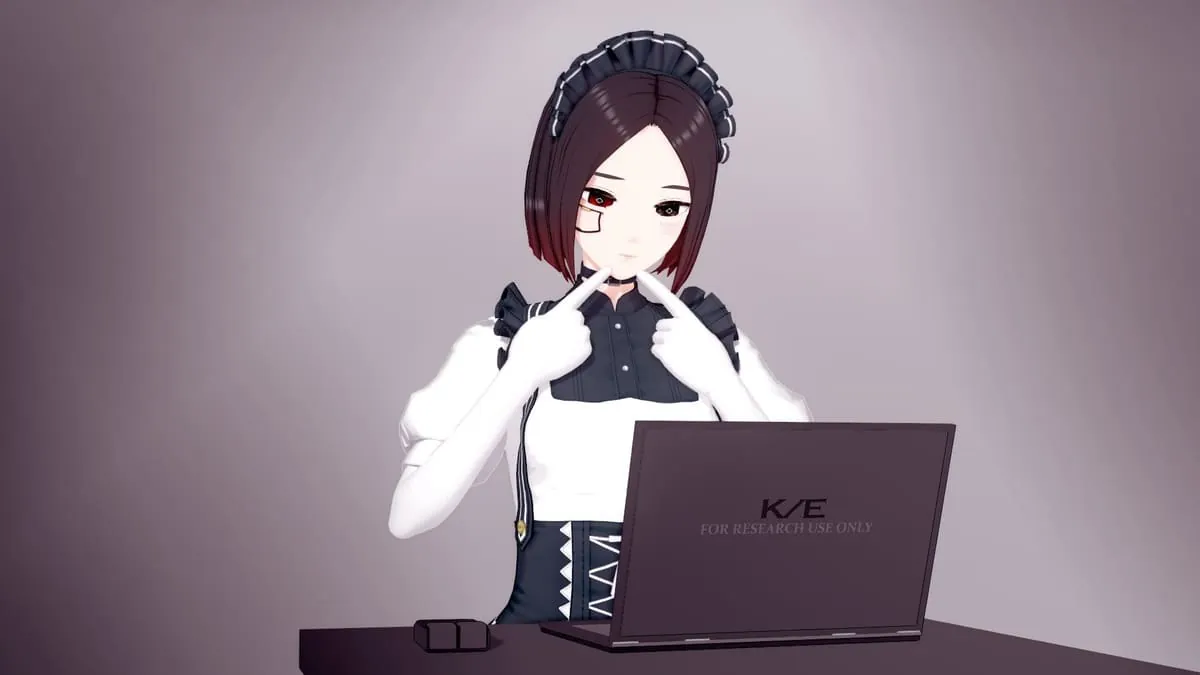
Thirsty for My Guest
Play Thirsty for My Guest
Thirsty for My Guest review
Mastering narrative choices and character dynamics in this immersive visual novel
Thirsty for My Guest redefines interactive storytelling through its complex character relationships and branching narratives. This visual novel challenges players to navigate emotional conflicts while balancing supernatural elements with personal growth. With multiple endings and dynamic choice systems, it offers a unique blend of mature themes and strategic decision-making that keeps players engaged across multiple playthroughs.
Core Gameplay Mechanics and Systems
Dynamic Choice Architecture and Consequences
Let’s get real—how many times have you played a game where your “big decisions” barely mattered? 💀 You pick “save the city” over “burn it down,” and the story railroads you into the same ending anyway. Thirsty for My Guest flips that script with narrative branching paths so wild, you’ll feel like you’re holding the director’s megaphone. 🎬
The game’s three-phase dialogue system works like a choose-your-own-adventure book on steroids. Every conversation has three layers: tone, intent, and commitment. For example, when flirting with the enigmatic bartender Thirstonia (yes, she’s also the namesake of the Thirstonia point system), you might:
1. Choose a playful tone (“Is that really how you mix a cocktail?”)
2. Decide your intent (Tease her skills vs. Genuinely ask for tips)
3. Double down with a commitment action (Wink or walk away)
I learned this the hard way when my cocky “I could mix better blindfolded” line backfired spectacularly. Thirstonia challenged me to a mix-off, and let’s just say my character spent the next scene covered in blue curaçao. 🍸 The dialogue choice impact here isn’t just cosmetic—it locks or unlocks entire story threads.
| Decision Level | Short-Term Effect | Long-Term Consequence |
|---|---|---|
| Tone | Immediate reaction | Unlocks hidden options later |
| Intent | Relationship shift | Changes mini-game difficulty |
| Commitment | Skill check trigger | Alters ending eligibility |
Pro tip: The game tracks your choices through a Thirstonia point system that’s part karma meter, part personality quiz. Earn points by aligning with character values—like rebelliousness (skateboard tricks over studying) or empathy (listening to NPC backstories). But beware: Points aren’t just about being “good” or “bad.” They’re keys to multiple ending requirements.
Relationship Building Through Interactive Dialogues
Remember that childhood friend who’d stop talking to you for a week if you ate their last Oreo? Thirsty for My Guest relationships are that sensitive—in the best way possible. 💔→❤️🔥 Every interaction uses dialogue choice impact to shape how characters perceive you, complete with visible trust meters and spicy jealousy mechanics.
During my first playthrough, I tried romancing the skatepark rival Jett while secretly bonding with bookish librarian Elena. Big mistake. 📚 Jett caught us exchanging poetry in Chapter 7 and sabotaged my next skateboarding challenge. The game’s narrative branching paths don’t just fork—they spiderweb.
Here’s how to avoid my blunders:
– Read the room: Characters drop visual hints (crossed arms, eye rolls) about preferred conversation styles
– Balance Thirstonia points: Maxing out “rebel” points too early locks you out of diplomatic solutions
– Fail strategically: Sometimes bombing a skill check leads to funnier, more unique scenes
The Thirstonia point system thresholds for endings are tighter than a skateboard’s trucks. Check this out:
| Ending Type | Minimum Rebel Points | Minimum Empathy Points | Key Relationship |
|---|---|---|---|
| Rebel King/Queen | 90 | ≤20 | Jett (Lv. 5) |
| Harmony Hero | 30 | 85 | Elena (Lv. 5) |
| Lone Wolf | 50 | 50 | None ≥ Lv. 3 |
Resource Management and Progress Systems
Okay, let’s address the elephant in the room: Why does a visual novel need skateboarding minigame mechanics? 🛹 Because Thirsty for My Guest isn’t about either story or gameplay—it’s about how they fuse. Landing a kickflip during Jett’s rivalry arc boosts your Rebel points, while nailing a cooking minigame for Elena strengthens Empathy.
But here’s the genius part: These systems talk to each other. I once aced a ramen-cooking sequence (timed ingredient swaps + haiku writing), which unexpectedly gave me a “Cultural Ambassador” perk. Later, this let me bypass a brutal skateboarding skill check by quoting Japanese poetry mid-ollie. 🍜→📜
Multiple ending requirements often demand mastery of both sides:
– 60% of endings need at least Level 3 in either skateboarding or cooking
– Secret “Zenith” ending requires Level 5 in both (average playtime: 22 hours)
– Speedrunners can hit key endings in 8 hours by min-maxing Thirstonia points
Time breakdown for completionists:
| Ending Category | Average Playtime | Key Challenges |
|---|---|---|
| Romance | 14-18 hours | Balancing dual relationships |
| Rebel | 10-12 hours | Mastering skateboarding tricks |
| True Neutral | 20+ hours | Precision point management |
Final pro tip: Use the pause menu’s “Choice Atlas” to track narrative branching paths you’ve unlocked. It’s like having GPS for your chaos. 🗺️ And remember—sometimes the best stories come from epic fails. My favorite ending? The one where I burned the ramen, wiped out on a half-pipe, and still got the girl through sheer awkward charm. 😅
Thirsty for My Guest sets a new standard for emotional storytelling in interactive media, blending complex character dynamics with meaningful player agency. Its layered systems reward careful planning while allowing organic relationship development. For those ready to explore its rich narrative landscape, multiple playthroughs reveal hidden depths and surprising connections between characters.




















